Sweet-scented osmanthus is a species of hi-light tree, but it requires a certain shade in young age and requires sufficient light in adulthood. Suitable for warm and moist sub-tropical climate, there is a certain degree of cold resistance, but not very strong. The soil requirements are not too high. In addition to alfalfa land and saline-alkali soil, it can be cultivated, and fertile, moist, well-drained sandy loam is the most suitable, the soil should not be too wet, once the soil is damaged, the roots rot and the leaves must fall off. , resulting in the death of the whole plant.
Seed nursery advantages: Sowing seedlings can obtain a large number of single-rod Osmanthus seedlings, suitable for use as street trees.
Disadvantages of seedling seedlings: Flowers bloom after 10 years, and it is easy to mutate. There is no seedling seedling root system.
1. Seed harvest
The sweet-scented osmanthus seed is a stone fruit, long oval, ribbed, and generally matures from April to May. When mature, the outer skin changes from green to purple-black and falls off the tree. Seeds can be picked from trees or picked up on the ground, but they must be picked up and picked up. Otherwise, the weather in spring is dry and the seeds are prone to losing water and losing their sowing value.
2, seed modulation
After osmanthus seeds are harvested, they must be prepared immediately. The mature fruit outer seed coat is soft and can be immediately rinsed with water. The peel is washed to remove empty grains and small seeds floating on the surface of the water. The impurities are removed and dried in the room. Be careful not to dry in the sun, because there is no waxy layer on the osmanthus seed coat, it is easy to lose water and dry, and lose its physiological activity.
3, seed storage
The Osmanthus fragrans seeds have the characteristics of physiological after-ripening and must be properly stored and primed before sowing seedlings. Osmanthus seeds are generally stored in sand and water in two ways: the sand is covered with layers of wet sand; the water is used to hold the seeds in a bag that is breathable but not easy to smash. The best is running water. Always check to see if the seed loses water or spoils. The location of the sand seed is best to be in a cool and ventilated place and piled on the land or the sand. Do not pile it on the concrete floor. The seed bag of the water reservoir should not be exposed on the surface of the water, and the summer seed bag should be kept away from the high-temperature water layer on the water surface to prevent the seeds from germinating and being rotted by heat.
4. Inspection and disinfection of seeds
(1) Inspection: Seed tests should be conducted before sowing to remove empty shell seeds and altered seeds. Then use a knife to randomly cut some of the filled seeds and see if the seed is fresh and viable. The seeds of a generally good seed are milky white.
(2) Disinfection: Wash seeds first with clean water and then immerse them in 0.5% potassium permanganate or 1% bleach solution for 15 to 20 minutes. Then filter out the remaining residue of the disinfectant solution. The seeds are rinsed with water and then dried. Dry sowing; or soaking with 0.5% formalin solution for 15 minutes, pour off the liquid, seal and boring for half an hour, then rinse with water and dry to sow.
5, germination
In order to allow the seeds to germinate quickly and neatly, the disinfected seeds can be immersed in warm water at a temperature of about 50°C for 4 hours, then removed and placed in a basket, covered with a damp cloth or straw, and placed at a temperature of 18 to 24°C. Under the germination. When half of the seed shells are cracked or slightly exposed, the seeds can be sown. During the germination process, the seeds should be frequently turned so that the temperature and humidity of the upper and lower layers are kept consistent so that budding can be achieved.
6, sowing
In the second to early April of the following year, seedlings can only be planted when the seeds are cracked. Generally, the method of seeding is adopted, that is, horizontal or vertical strips on the seedbed, 12 cm in width and 3 cm in depth; 1 seed of germinated seeds is sown in every 6-8 cm in the trench. Put the umbilical side on sowing so that the radicle and young shoots do not bend and affect the growth of seedlings. In Guilin, usually with a wide beam, row spacing of 20 to 25 cm, width of 10 to 12 cm, sowing 20 kg per mu, can produce 25,000 to 30,000 seedlings.
Immediately after sowing, fine soil shall be covered, and the thickness of the cover soil shall not exceed 2 to 3 times the diameter of the seed. After covering the soil, the surface of the seed shall be leveled so as not to accumulate water; then a thin layer of straw shall be covered to prevent the soil from being used. And tighten the rope to prevent the cover grass from being blown away by the wind; then use a fine-grained watering can to fully spray water until the soil is soaked. Covering the grass and spraying water can keep the soil moist, avoid soil compaction, and promote early germination and early emergence of seeds.
7, after sowing cultivation management
The management of seeds after germination should be promptly followed to cultivate robust seedlings. For the growth and development of seedlings, the following six tasks should be done during specific operations:
(1) Uncover and shading
When the seed germinates, the grass should be properly uncovered on a cloudy or late afternoon. If it is too early to expose the grass, it will not reach the goal of covering grass; Uncovering the grass should be carried out in different stages, and part of the cover grass can be kept between seedling rows to keep the seedbed moist, reduce water evaporation, and prevent the growth of weeds.
After exposing the grass, entering the summer hot season, the scaffolding should be timely shaded, and the transparency of the arbor is kept at about 40%. The daily shading time is usually the morning cover and the evening exposing; the sunny cover, the rainy day exposing until September. In the middle of the year, shades for shade can be stored.
(2) Loose soil and weeding
Loose soil should be carried out in a timely manner, with a depth of 2 to 3 cm. It should not be deep enough to prevent injury. Weeding can be carried out in conjunction with loose soil, and we strive to achieve early and small additions. In addition, weeds must be removed from the ditch, trails, and fields to clean the nursery and eliminate pests and diseases.
(3) Saplings and Miao Miao
Osmanthus fragrans seedlings are more shade-tolerant, slower in growth rate, and generally do not need to be seedlings. When transplanting seedlings, do not damage the roots of the preserved seedlings. After the seedlings are transplanted, an irrigation should be performed so that the roots of the seedlings can be closely combined with the soil.
(4) Irrigation and fertilization
In the summer and autumn drought season, it is necessary to pay attention to drought and seedling maintenance, and it is advisable to carry out irrigation in the morning or in the evening. To adopt the quick-discharge rapid-discharge method, the water must be poured thoroughly and thoroughly, and in the rainy season, it is necessary to strengthen the drainage of the gutters and avoid seedlings harvesting.
One month after the seedlings were unearthed, they entered the period of vigorous growth of seedlings. Every month, it should be poured 1 round of decomposed and thin fertilizer or nitrogen fertilizer. Concentration per 100 kg of water mixed with 10 kg of fertilizer or urea 150 to 200 grams or 300 to 400 grams of thiamin. With the growth of seedlings, the fertilization concentration can be appropriately increased. After the fall, stop topdressing to prevent seedlings from being attacked and suffered freezing injury. When dressing, do not allow the fertilizer solution to adhere to seedlings to avoid injury.
(5) Transplanting at the right time
Osmanthus seedlings planted for 1 year high 20 ~ 30 cm, the following year in early spring for transplantation. The two-year-old seedling height is about 60 cm. When the 3-year-old seedling height is about 1 meter, the transplant is required again. It is generally required to cultivate for 8 to 10 years, a height of 2 to 3 meters, and a diameter of 8 to 10 centimeters to facilitate maintenance and management after planting.
Grafting method
Grafting time is from March to April. Osmanthus fragrans grafting generally use privet or water wax for rootstock. Ligustrum and water wax have strong adaptability, cold and sturdy, easy to breed, but the interface is easy to break after survival. In order to overcome this shortcoming, a low-resistance method can be adopted, that is, the grafting site is buried in the soil at the time of colonization so that the root of the scion itself grows.
The seedlings grow well, form quickly and bloom early. Grafting seedlings can be flowered 3 to 5 years earlier than cutting seedlings, and some grafted seedlings can even bloom in the same year. Grafting seedlings can maintain the excellent characteristics of the varieties, but also more cold-resistant and salt-tolerant, can further expand the scope of introduction and cultivation of sweet-scented osmanthus, which is an important reason for grafted seedlings has not been eliminated. However, it should also be noted that due to the high grafting technology requirements, it can only be produced manually by skilled craftsmen, and the large-scale development and operation are subject to certain restrictions; at the same time, the affinity of cuttings and spikes is often not high, and the incisions are easily broken or “small feet†and “largeâ€. Technical issues such as feet are required to be taken seriously and properly resolved.
Abdominal connection and docking are generally used
1 Abdomen connection: The abdominal joints are to be trimmed before the rootstock is harvested. Cut off all the 6-7 cm away from the soil surface. Cut a knife near the root stem. Do not hurt the pulp part. Scions use 2-3 shoots (without leaves), about 10 cm long. It is appropriate to have 2-3 sections. The wedge interface is then cut into wedges and inserted into the cuts of the rootstock to allow them to engage closely. The plastic or hemp is then used to tie the soil to the top of the scion.
2 by: to rely on is the first rootstock in the basin to feed. 6-July period and the rootstock selection and rootstock thickness similar to two years of sweet-scented osmanthus branch connected by the basin, survived after the "white dew" cut. The new strain will be able to bloom in the year.
After grafting to survive, when the new wood is as long as 10-15 cm, cut the remaining rootstock branches. Since adventitious buds are easily sprouted by anvil surgery, they should be stripped at any time. During June-August, drought, fertilization, and weeding were carried out. Potted seedlings. When the new shoot reaches about 15 percent, it should be picked up to promote the growth of lateral branches and shrubs.
Management after grafted seedlings should be determined by different types of rootstocks
The choice of rootstock is very important. In the provinces and regions south of the Yangtze River, Ligustrum lucidum and Ligustrum lucidum are commonly used as rootstocks; Ligustrum lucidum and water waxes are mainly used in Anhui; Small waxes and water waxes are mainly used in Henan; Fringe trees (fried tendons) are used as rootstocks in Shandong. The author believes that if the conditions permit, especially in the southern region, the best use of sweet-scented osmanthus anvil. Although it does not increase the stress resistance of grafted seedlings of Osmanthus fragrans, it can greatly ease the grafting incompatibility of the cutting off of the rootstock and the “small feet†and “big feetâ€.
1. Large-leaf privet as the rootstock: The disadvantage is that the grafting site is not strong, easy to break off from the marrying interface. Improvement methods: 1 contact should be low, can increase the relative strength; 2 the interface is longer, the rootstock will heal better, this should be paid more attention to the high connection and docking; 3 the upper pot or change basin planting should be deep, this can induce Osmanthus itself Rooting, increase the ability to attach; 4 tying to be late. After grafting, the seedlings that survive, the dressings are best to be removed before entering the house or germinate the following year, after which they can be loosened to consolidate the survival.
2. Ligustrum lobular as rootstock: osmanthus osmanthus grafted sweet-scented osmanthus, easy to appear coarse under the "small feet" problem. To eliminate “feet†problems, we must start from prevention: 1 The grafting point should be low, and it can be close to the root. It can increase the strength of the joints and induce the rooting of osmanthus itself. 2 When planting the upper pot, the grafting point should be buried in the soil. About 2 centimeters or so, in order to cover up possible "feet" problems, in the future, when turning over, we must pay more attention to this point; 3 If the "feet" problems appear in the use of high-pressure or grafted osmanthus seedlings grafted Higher. The only way to eliminate the disease is to swap the plants into deep basins and then apply high pressure, ie, girdling or sub-ringing above the grafting point, and cultivate them on the soil until the osmanthus roots have been rooted and then plant it again.
3. Fringe trees as rootstock: fringed trees for rootstock grafted osmanthus. The "bigfoot" problem often occurs, making it difficult to shape the osmanthus canopy. Improvement methods: (1) Strengthen the management of fertilizer and water in the growing season, promote the osmanthus to cultivate robust branches, and accelerate the growth rate; (2) To trim those dense branches, cross branches, disease and disease branches and affecting the ornamental branches, timely trim It is conducive to the formation of the ideal crown in the future.
There are several methods for grafting seedlings, but regardless of which grafting method is used, the following key technical points should be carefully grasped:
First, scion should be selected from mature, mature, flowering, and pest-free young trees of the young and young ages. The branches that grow inside the crown and the shoots that hang down or grow up are not to be selected as scion.
Second, the scion cut from afar should be wrapped in wet moss or immersed skim cotton to keep the scion fresh. If the local materials, cuttings cuttings, should be followed by the cut; once grafting can not be completed, available wet sand storage, but the storage time should not be too long.
Thirdly, when grafting, the leaves of the scion should be cut off first, leave the petiole and then grafted. During the operation, the grafting knife should be sharp to ensure that the noodles should be smooth and the scion should be aligned with the forming layer of the rootstock.
In southern nurseries, digging methods are often used for grafting and seedlings for reasonable arrangements of time and labor. That is, from November to March of the following year, the rootstocks of osmanthus fragrans are planted and grafted indoors. After being picked up, they are put into sand traps in greenhouses and hotbeds, and then transplanted into nursery plants. This method of excavation can reduce the labor intensity of workers and increase the labor productivity of workers; however, excavation must pay attention to moisturizing mulch, otherwise it will greatly affect the survival rate of grafted nursery. Can be considered in different parts of a osmanthus seedlings, grafting several varieties of flower color and flowering scion of different varieties, to be grown, you can make a osmanthus tree, open a variety of bright colors and successive flowering osmanthus, greatly Improve the economic benefits and social benefits of osmanthus cultivation.
Glow In Dark Tape
1. Material and classification of glow in dark tape
We have PET material glow in dark tape and PVC material glow in dark tape. PET material is cheaper but not printable. PVC material support customized printing with low MOQ.
For both materials, we have different kinds according to the glowing time it can last after full charging (0.5hours charging at least). We have 2hours, 4hour, 6hours, 8hours and 10hours according to the glowing period it can last.
2. Colors for choosing
We have light green, pink, orange, red, blue, white for choosing.
3. Features
a. Good ahesion, we use solvent acrylic adhesive, the adhesive is strong and long lasting.
b. Waterproof. Both PET and PVC material are waterproof. Can used for both indoor and outdoor usage.
c. Long service life: 2~3 years even for outdoor usage.
d. Different sizes for choosing: 1.24m x 45.7m log roll, or other customized sizes such as 25mm/ 50mm x 5meters/ 10yards/ 10meters/ 18meters, etc.
e, Accept die cuting to small pieces such as dots, stars, arrows, etc,
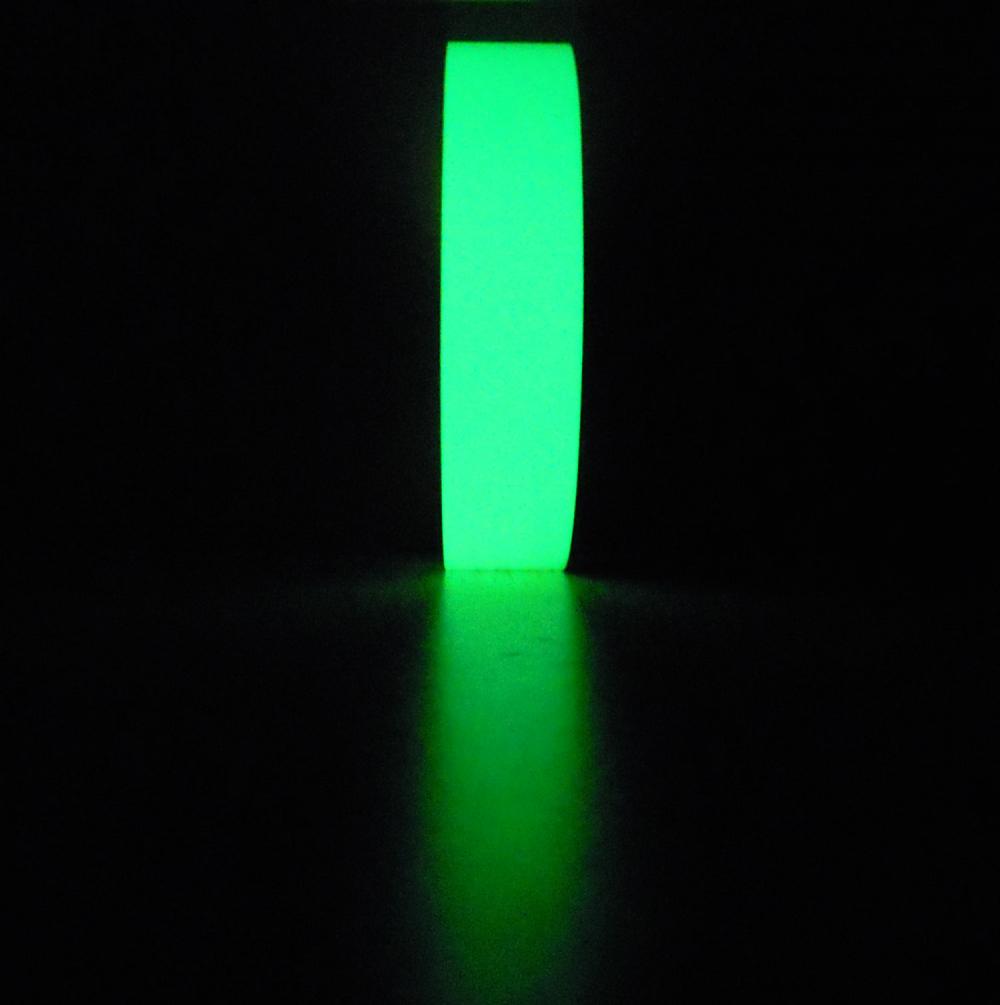

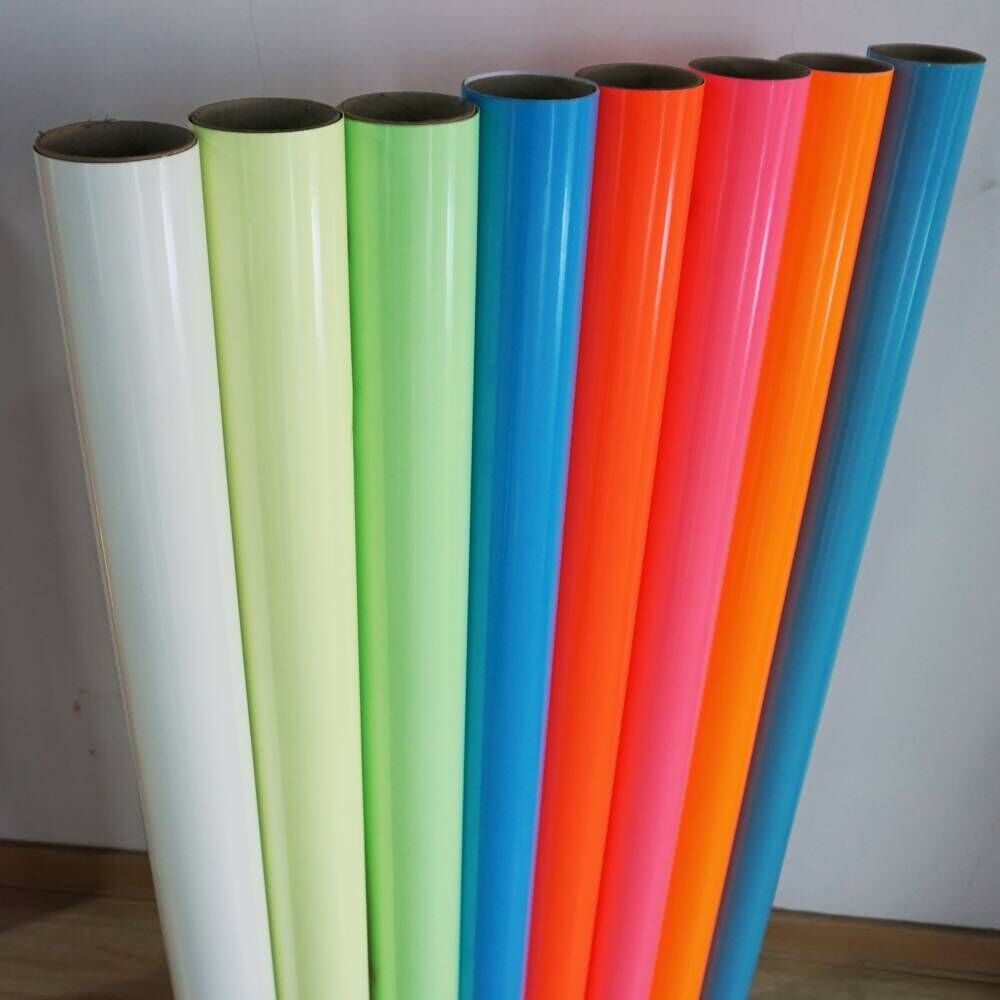
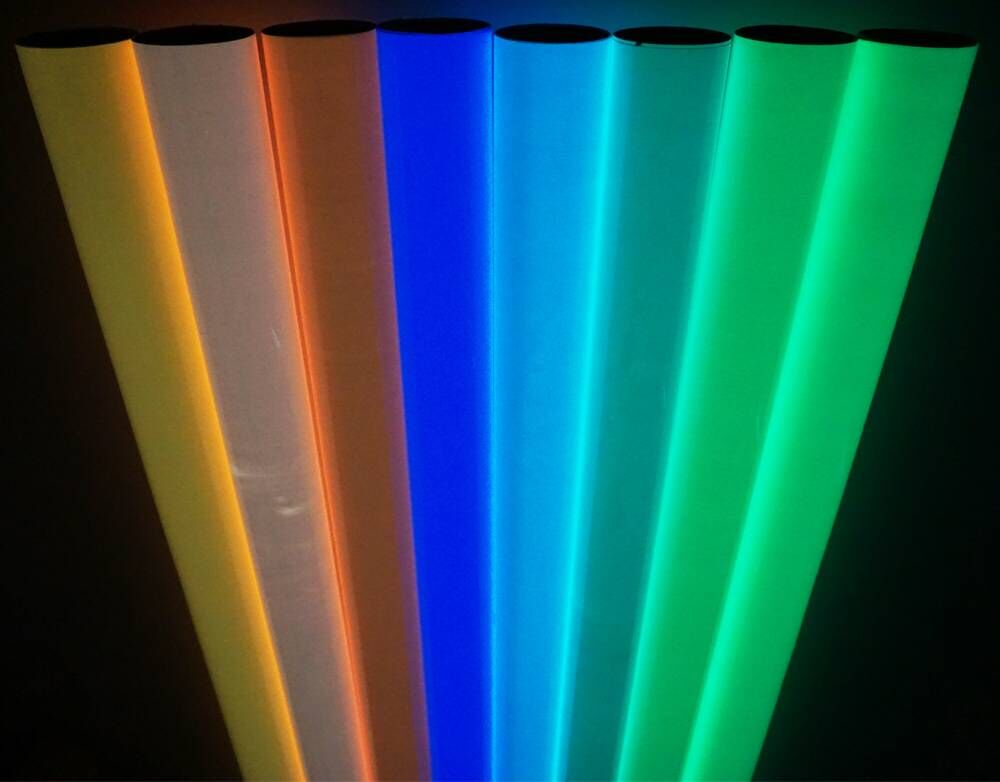

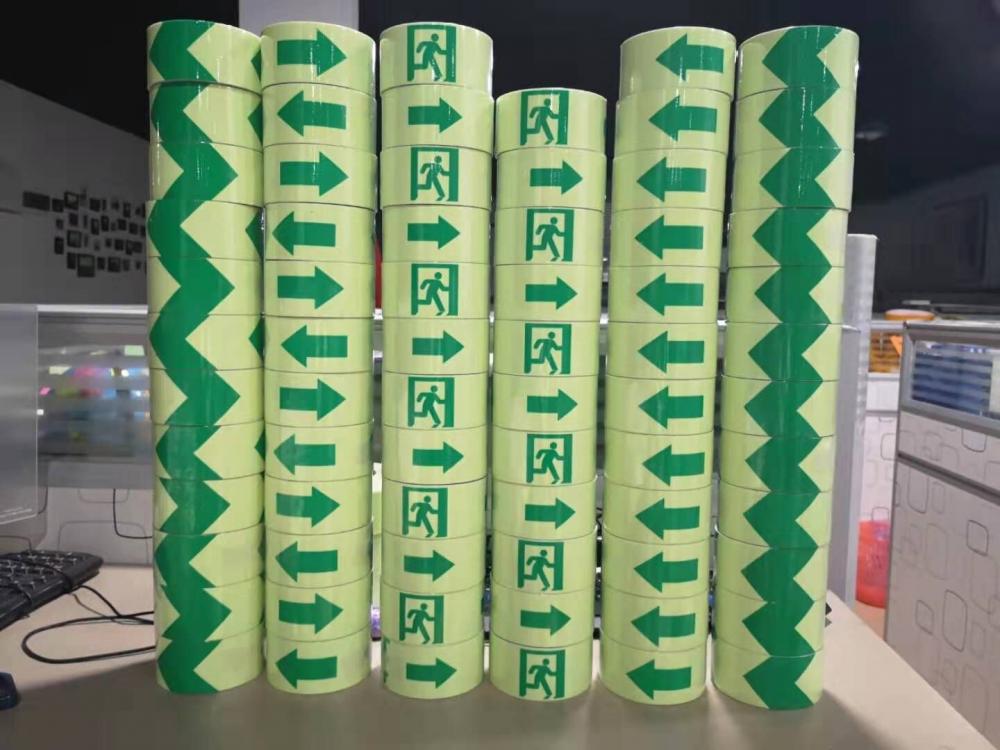
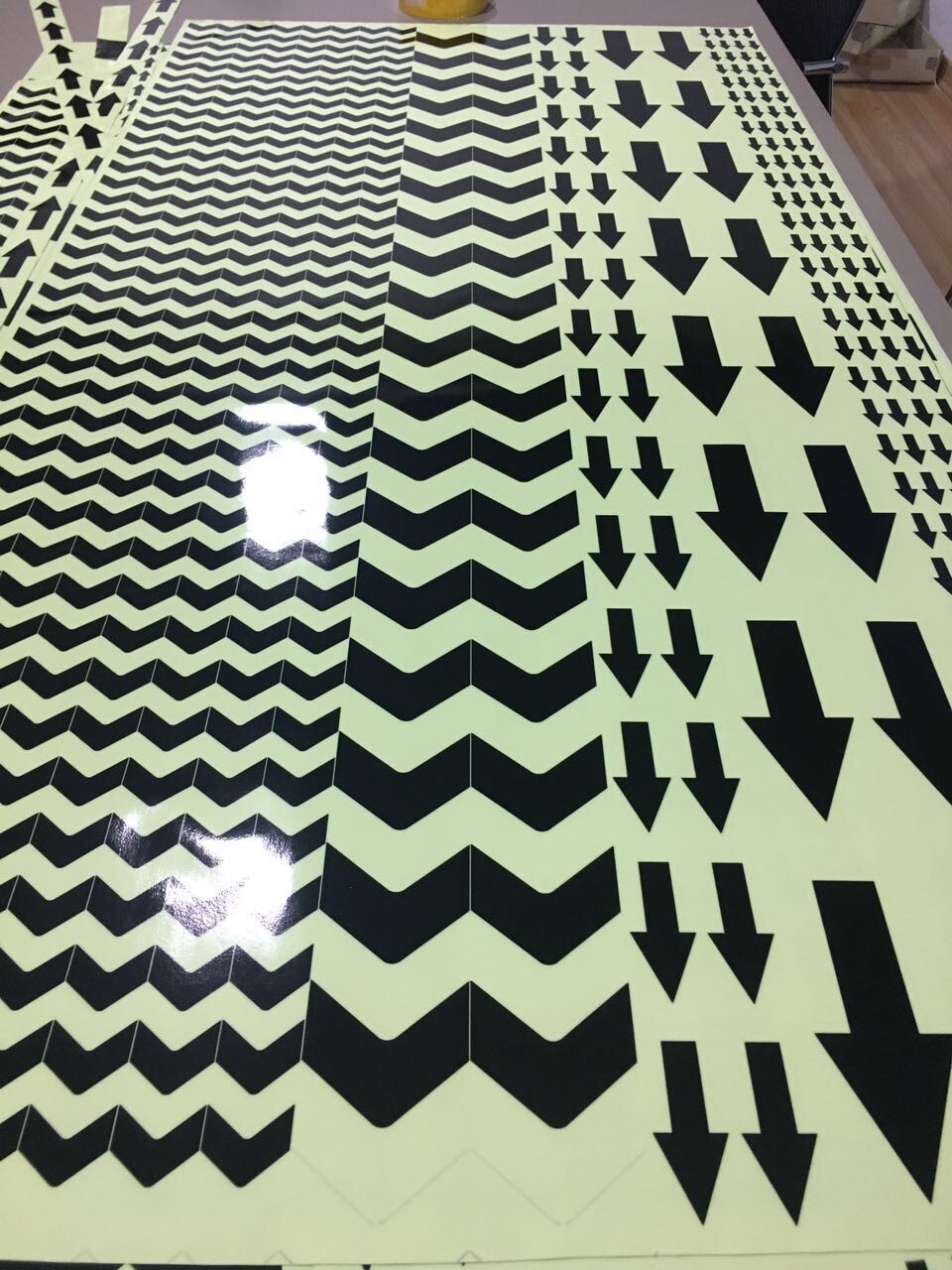

Glow Grip Tape,Luminous Adhesive Tape,Waterproof Glow In The Dark Tape,Glow In The Dark Reflective Tape
Kunshan Jieyudeng Intelligent Technology Co., Ltd. , https://www.jerrytape.com